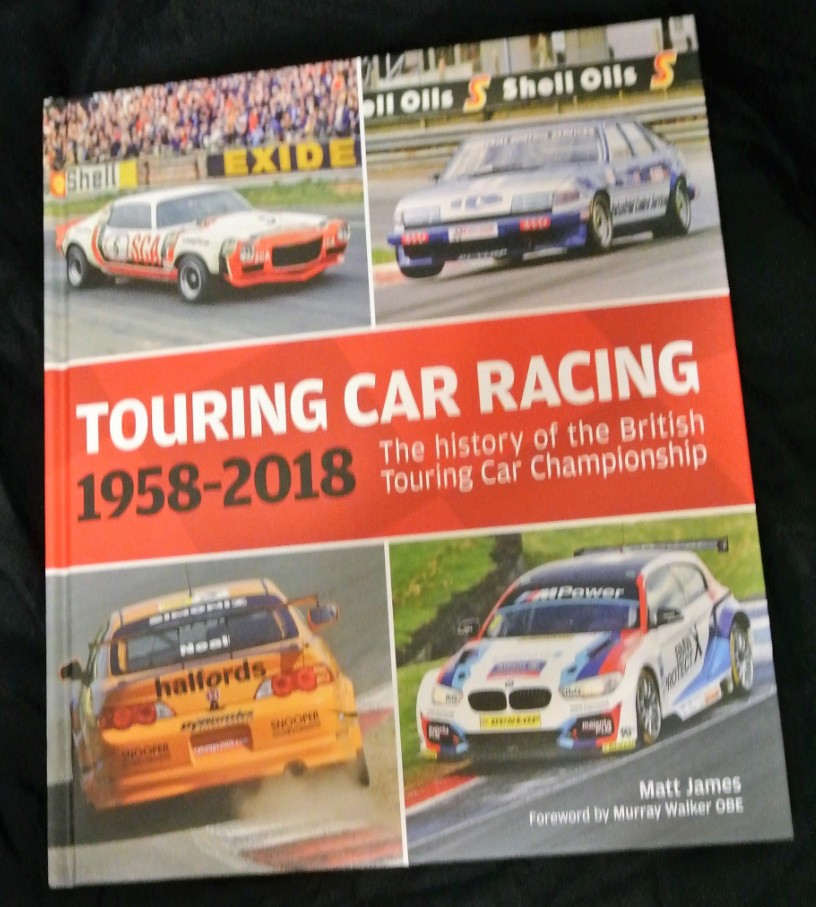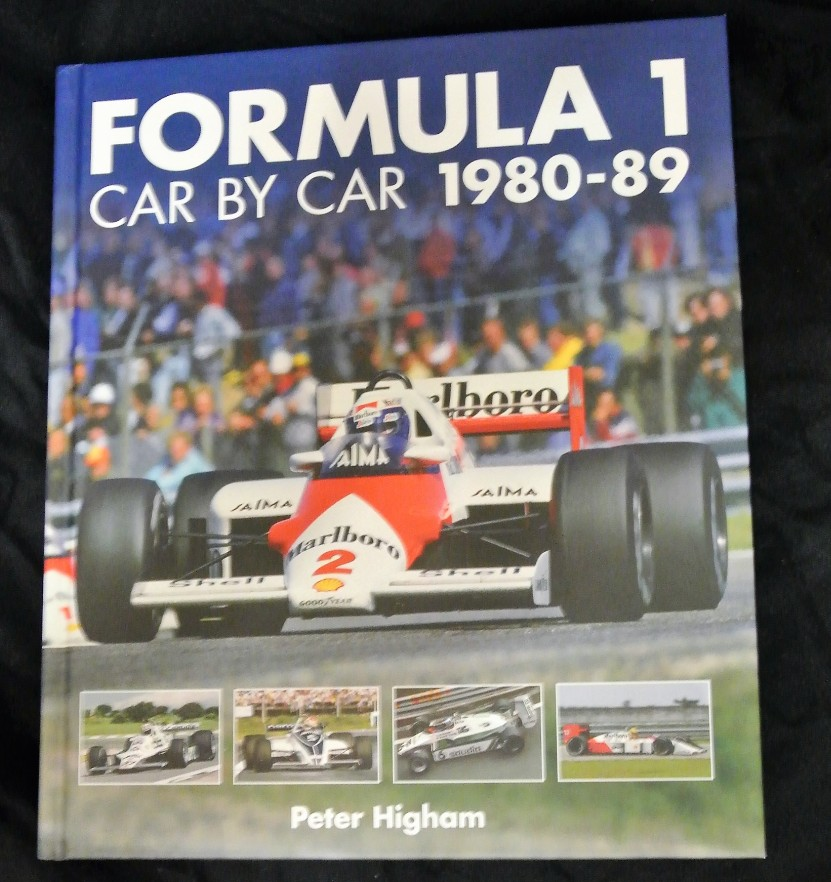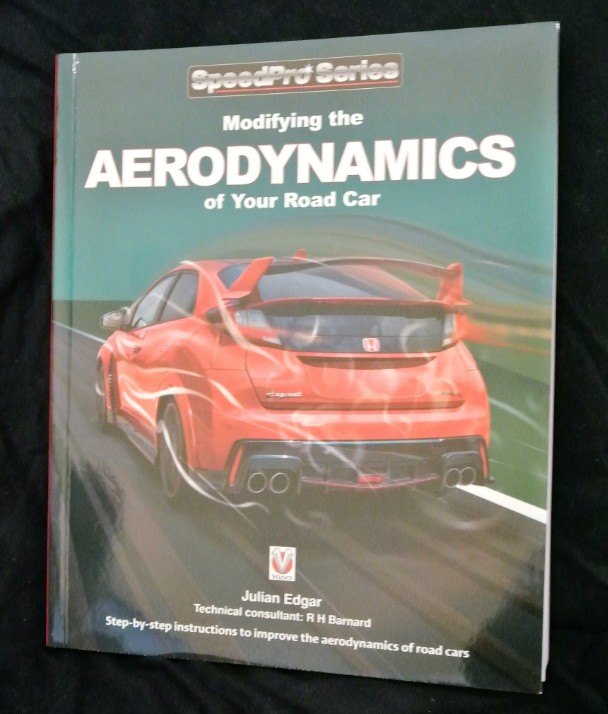Touring Car Racing – The History of the BTCC 1958-2018
By Matt James
ISBN: 978 1 910505 36 6
£60.00
EVRO Publishing

For the past 60 years, the consistency of the British Touring Car Championship (BTCC) has ruled the racing circuits of our country. Always accessible, never less than spectacular, if anything, the annual Championship is more colourful than ever and attracts regular circuit attendances in excess of 35,000 ardent spectators, with a TV audience (thanks to the full-card coverage on ITV4) well into tens of millions for each event. While F1, as a ‘pinnacle’ sport, is largely out-of-touch with reality, as anyone who has ever spectated at a Touring Car race will attest, it possesses reality in every single, slam-dunked minute. It is little wonder that it is so popular. However, last year was a celebratory one, the BTCC having managed a run of 60 years at the head of its game. Therefore, it is most apt that Matt James, a time-served Touring Car journalist, was commissioned to fill 392 high-quality pages, with a suitably enthusiastic mix of words and both monochrome and full-colour photographs (over 600!). Naturally, it would not be much of a coffee-table tome, without a comprehensive tally of results charts and statistics gathered over the decades. They are present in abundance. Yet, it is the range of different makes and models, from Austin, Auto Union and Borgward, to Riley and Volvo, many pictured with their steel wheels and smoking tyres at weird angles, their drivers only just managing to control wild body roll, and the lack of sponsorship on the early cars that is amazing. The first ten seasons were notable for attracting F1 drivers to the competitive grids. However, despite a minor manufacturer involvement, 1968 witnessed the introduction of sponsorship and the domination of the ‘works’ teams. As the BTCC enters its 61st year, this excellent book reflects on six decades of phenomenal success.
Formula One – Car by Car 1980-1989
By Peter Higham
ISBN: 978 1 910505 23 6
£50.00
EVRO Publishing

It is great news for book lovers and enthusiasts that series of titles are made available for on-going investment and none more so than in the competitive hot-bed of F1. Covering the 1980s, this is the third episode of the decade-by-decade series curated by long-standing F1 journalist and fan, Peter Higham. It was an important era, as it heralded the arrival of the first turbocharged racing cars from Renault, Ferrari and the BMW-powered Brabham. Mind you, the Championship returned to normally-aspirated 3.5-litre engines in 1989 but the die had already been cast for the future direction of F1. The 1980s was also the McLaren decade, often involving head-to-head clashes with the indomitable Williams GP team. It was the decade in which Frenchman, Alain Prost, cemented his role in the formula by lifting no less than three world titles, although Ayrton Senna, Alan Jones, Niki Lauda and Keke Rosberg all took one apiece. Brazilian racer, Nelson Piquet claimed two series wins. The United Colours of Benetton added a splash of primary colours, while Ligier, Lotus, Renault and Tyrell all bolstered their tally of race victories. Supported by 600 mainly colour and a few black and white photographs, this hardback record has an acceptably formulaic approach to its 304pp that are packed with well-written reports that include details of all technical advancements that included the extensive use of carbon-fibre and upward-escalating engine power outputs. Although largely ‘secret’ at the time, the full specifications of the cars and their individual technology is also incorporated. Many critics regard the 1980s as the best decade of F1 and the cars were certainly among the best looking, which guarantees the success of this third-in-series title.
Modifying the Aerodynamics of Your Road Car
By Julian Edgar
ISBN: 978 1 787112 83 4
£35.00
Veloce Publishing (www.veloce.co.uk)

Largely a ‘dark art’, vehicle aerodynamics is a most serious concern for the entire motor industry, especially in its pursuit of improving fuel economy and reducing noxious emissions. However, the cost of hiring a wind tunnel, let alone a team of airflow engineers, would be immensely expensive for the private individual, unable to reap any subsequent financial rewards for effort expended. Motor manufacturers invest millions of Dollars and Euros to make their cars cleave through the air with greater efficacy and the ultimate examples of flow-refined cars include the expensive Nissan GTR and the current Honda Civic Type-R. Yet, even relative tiddlers, like the latest Suzuki Swift Sport and the Ford Focus, benefit significantly from aerodynamic improvements. This 248pp paperback, another in the series of SpeedPro books published by Veloce, seeks to burst the bubble on flow technology. Presented by Julian Edgar, supported by renowned aerodynamicist, Richard Barnard, a very down-to-earth explanation is made of all manner of aerodynamic alterations that will improve drag and lift figures, while also aiding engine cooling techniques, with quantifiable results. It is a fascinating book, as much for its delving into the history of automotive dynamics, as for reflecting on the techniques applied by various carmakers over the years. The beauty is, much of the hard work has already been completed and this book demonstrates how to apply it to your own vehicle. It contains plenty of self-explanatory photographs, graphs and diagrams, complete with pertinent links to supportive videos (mostly on YouTube), to help the home mechanic to achieve the best results.